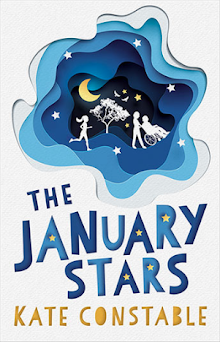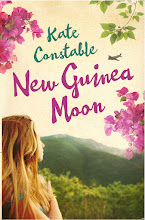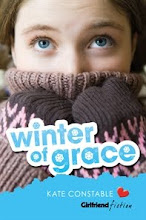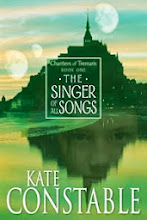30.5.22
The Skylarks' War & The Swallows' Flight
27.5.22
My Name is Asher Lev
I first read Chaim Potok's classic novel My Name is Asher Lev in the early 1980s when my mum was studying it for HSC. The copy that I found in Savers is inscribed with the name Jo Reidy 1979; a Google search reveals that Joanne Reidy (about the right vintage) now works for the Victorian Curriculum and Assessment Authority, and has had a great career in education, co-authoring several textbooks. So that's pretty cool! She was certainly very diligent in marking significant passages and underlining good essay quotes -- in pencil, of course.
My Name is Asher Lev is perhaps the archetypal Chaim Potok novel, where the conflict between the individual and their community is presented at its starkest and most painful. Young Asher Lev, a member of a Hasidic sect in New York, with parents who spend their lives in utmost danger in Eastern Europe supporting the Jewish faith, has a unique artistic gift. This is a portrait of the creative artist as a genius helpless in the grip of their own talent, and Asher Lev ends up following his gift quite ruthlessly and paying the ultimate price in being cast out from his people.
Asher Lev starts slowly; it's not until about halfway through that the drama really picks up pace and then brings it home with a wallop. It really is Potok's masterpiece.
25.5.22
My Year of Living Vulnerably (Updated)
Rick Morton's first book, A Hundred Years of Dirt, was like an electric shock: a blunt, uncompromising tale of pain and struggle. His follow up, My Year of Living Vulnerably, is looser, more diffuse: less of a powerful gut punch, more a series of taps on the head. It's a collection of meditations or reflections on a range of topics -- masculinity, animals, loneliness, humour, touch -- but above all, love and connection, which is, as he accurately concludes, the one thing that gets us all out of bed and out into the world.
Morton is always good company, dry and self-deprecating, but sometimes these essays drift into rambling discursions that might have benefited from a tighter structure. With this title, I almost expected a literal account of a year, but this book is a lot looser than that. It is a sequel to the earlier book in a way, as he explore the consequences of the trauma that he outlines so chillingly in the first volume. I love Rick Morton and he is always worth reading, as a thoughtful and insightful male writer, and I look forward to seeing what he does next.
Update: I forgot to point out links with other books that I was reading at the same time! Morton quotes from George Saunders, who wrote A Swim in a Pond in the Rain; he vapes with heated tobacco, as described by John Safran; and of course he lives with anxiety and PTSD, just like Steve Stossel. So lots of connections.
23.5.22
When We Fall
Alex Tillerson and her mum (who is described as 'a tough old bird' at the advanced age of, er, 58!!) discover a severed leg while walking on the beach, and the plot immediately begins to thicken from there. Actually now that I think about it, I'm not sure we ever got an explanation for why the leg was severed... but it certainly makes for a striking visual image, of which there are many sprinkled throughout the novel -- a pair of black angel wings, an isolated eco-house perched in the bush, a meticulously copied version of Bruegel's Fall of Icarus with the faces changed.
Like The Dry, When We Fall would make a fantastic Australian movie -- can't wait for the inevitable adaptation.
20.5.22
The House in Norham Gardens
I first discovered Penelope Lively's 1986 The House in Norham Gardens a few years ago, but I couldn't resist picking up this copy (signed by the author!!) from a neighborhood street library. It was interesting to notice how my awareness has changed in the intervening years; I definitely read it with different eyes this time around.
Norham Gardens is a real place, a suburb of Oxford which is home to tall, eccentric Victorian houses -- the illustration on this cover is pretty accurate. I like the portrait of Clare, too, quiet and thoughtful, with a lot going on under the surface (though she does look a bit younger than fourteen here). However I have to take issue with the Fly/Sepik shield as depicted here; it should perhaps look more like this:
When Clare finds the ceremonial shield in the attic, a relic of her ancestor's expedition to Papua New Guinea a hundred years before (a real historical expedition, whose artefacts now reside in the Pitt-Rivers Museum in Oxford), she begins to dream about the people who made it: 'brown people' in a jungle village. Slowly Clare's dreams shift and alter; the people in the dreams come closer, right into the house; but then they recede, she dreams of them dressed in Western clothes, living in a modern town, and she senses that they no longer want the shield, that it has lost its meaning for them, and she donates it to the museum.
I do applaud Lively's thoughtful and compassionate exploration of ancient spirituality, how this object becomes meaningful to Clare and helps her to sort out her own muddled feelings about growing older, change and development, death and history and even race. However I felt troubled about the conclusion, and the assumption that the makers of the shield (who traded it to Clare's great-grandfather rather too easily) would no longer value it or the other stolen materials now sitting in the museum.
Still, The House in Norham Gardens is that rare beast, a children's/YA novel from the 1980s which at least attempts to wrestle with the issue of colonialism, and for that I have to cheer.
18.5.22
A Swim in the Pond in the Rain
A Swim in the Pond in the Rain was another title with a long waiting list at my local library. The subtitle of George Saunders' book is (In Which Four Dead Russians Give Us A Masterclass in Writing and Life). I don't know that I've read another book quite like this one. It's an instruction book that teaches us how to read, how write and how to life.
Saunders reprises the creative writing class he has given at university for twenty years, inviting us to closely read these seven short stories by four classic Russian authors (Chekov, Tolstoy, Gogol, Turgenev), to notice what they do right and how they achieve it, and also to note their flaws. While he's at it, he points out the life philosophies of these authors: what gives these stories greatness as well as technical mastery. And on top of that, he passes on his own lessons from a lifetime of pursing his own writing career.
It was really interesting to read George Saunders' writing advice straight after Graeme Simsion's. While Simsion is a planner, Saunders seems to be a 'pantser' -- his approach is to 'follow the voice' and let it reveal its secrets. He is a great one for tapping into the unconscious creative mind, the writer's intuition, and allowing the unfolding story to emerge with minimal conscious guidance -- the only question, he says, is to examine each line and judge whether it pleases you. I have to say this is not a method that appeals to me much, though I might try it if I'm really and truly stuck.
Saunders is a wonderful teacher, an accomplished, compassionate and humorous writer, and joyful company on this journey through Russian literature. But I'm not sure if he is the writing teacher for me.
16.5.22
My Age of Anxiety
I have anxiety. My mother has anxiety. My grandfather (almost certainly) had anxiety. One of my daughters has anxiety. But I don't think any of us have suffered the extreme torments that have tortured Scott Stossel from his earliest childhood, through adolescence and into an apparently successful adulthood.
It was quite harrowing to read Stossel's struggles with various phobias, particularly his terror of vomiting, which I didn't even know was a thing, but has more victims than fear of flying. He intersperses his personal account of trying to deal with crippling, lifelong dread (psychotherapy, medication, one particularly distressing attempt at exposure treatment) with the latest brain science that attempts to tease out where anxiety comes from, how it serves us, and how we can try to overcome it.
My Age of Anxiety is a very readable and intelligent examination of mental health and a memoir of pain and dread. Stossel is optimistic and nuanced in his approach, recognising the tension in his concern that Americans might be over-medicated, with his own long-term dependence on that same medication. This is not an easy topic but it is very timely and a great summary of the current science.
13.5.22
Only A Monster
I so enjoyed Only A Monster by Vanessa Len -- maybe I'm swinging back round to liking YA again, after a fallow time? Maybe I just need to be careful about the novels I choose? Anyway, Only A Monster shares some common ground with House of Hollow -- both by young Australian women authors, both set in London, both centring on young women with a secret family heritage that needs to be unravelled in a spooky Gothic atmosphere of chases down darkened streets, glamorous parties and mysterious, attractive strangers...
Only A Monster is built on a brilliant premise -- that there is a race of beings who look human, but who can steal time from human lives in order to time travel (a little like the original conception of Dr Who's Weeping Angels). These 'monsters' consist of twelve great families, each of which possess particular extra powers (like perfect memory, or the ability to hide and retrieve objects in thin air). I'd love to know more about their world and surely there will be further volumes which explore this universe more fully and wrap up some of the loose ends left dangling at the end of this novel. I should make it clear that Joan is one of the 'monsters' -- the only slight quibble I had was that I found it hard to apply this term to the super-charismatic, elegant and gifted characters who people this world!
Only A Monster is terrific, rich and atmospheric fun.
11.5.22
The Midnight Library
Matt Haig's novel, The Midnight Library, had an absolutely ridiculous reserve queue at the library -- I think I was about number 18 when I put my name down. But I can absolutely understand why it's been so popular, and it's a terrific, engaging and uplifting read.
When Nora decides that life is no longer worth living (yes, it's a miserable start, but persist) she finds herself in a mysterious library, rather like Harry Potter's King's Cross station between life and death -- except that this limbo takes the form of a library, filled with volumes that represent every life she might have led rather than the one she ended up with. What follows is a lot of fun, and poignant moments, as Nora tries on one life after another and reconsiders every life choice she's made. Some lives are bold, some are tragic, some are beautiful and fulfilling, and of course Nora ends up realising that life is worth living after all, after a nice swerve to avoid one neat and too easy solution.
This book is going on my list of novels I think my mother-in-law will enjoy, unless she's already read it, which is a distinct possibility.
6.5.22
Unfollow
I read Megan Phelps-Roper's memoir, Unfollow on the recommendation of Michelle Cooper, and it was such an interesting read. Even from far away in Australia I was aware of the Westboro Church, founded by Phelps-Roper's grandfather and consisting basically of her extended family, and their hate campaign, picketing with signs reading 'God Hates Fags' and celebrating the deaths of overseas soldiers. I never quite understood the logic of their campaign (and I still don't, really) but they certainly revelled in their own self-righteousness, and formed a self-contained universe which served to reinforce their own beliefs. Hm, remind anyone else of a social media bubble?
For Megan, what deflated the bubble was, ironically, interactions on social media. She enjoyed debating with outsiders, and it exposed her to different points of view. But what really made her lose her faith in Westboro was the appalling, hypocritical behaviour of self-appointed 'elders' who not only sidelined Megan's mother but sought to exert control over Megan and other female members of the church, regulating their clothes and activities, and everything they said or did. Megan's lively intelligence, which is evident in this memoir, didn't allow her to accept the contradictions, and gradually she found herself rebelling -- at first internally, and finally by leaving the church altogether. It was a really brave move to exile herself from her family, her community, the only world she'd ever known, but she found support where she never would have expected it, from those very people on the internet that she'd been debating with all those years.
Essentially Unfollow is the story of escaping from a cult, and it helped me to understand the power of belonging that helps people to stay put, and the true strength required to break free.
4.5.22
One Hundred Days
Alice Pung is such an accomplished writer, she slides between memoir, non-fiction, young adult and now adult fiction with ease and grace. Although the central character of One Hundred Days, Karuna, is only sixteen, I'm guessing that the cover blurbs from Maxine Beneba Clark and Christos Tsiolkas position this novel as an adult book. However, I think it could easily be recommended to young adults.
One Hundred Days is told by Karuna, who is struggling to emerge from what she experiences as the smothering over-protection of her Filipino-born Chinese mother after Karuna's father abandoned them. When Karuna becomes pregnant, the struggle shifts to the expected baby: will it be raised and acknowledged as Karuna's child, or her mother's? Shame and power, love and resentment, anger and humour, are beautifully balanced in this story as Karuna fights not just for herself, but for her baby's future.
I loved this book so much I gave it to my mother-in-law. It's a real family story, though the family has shrunk to its smallest configuration -- mother and daughter. The way that little family eventually expands is the heart of this very Australian, illuminating and warm novel.
2.5.22
His Name Was Walter
I'm falling behind again! It seems like ages since I finished this book. His Name Was Walter, from veteran children's writer Emily Rodda, picked up just about every award on offer in the year of its release (2018); its cover is covered in award stickers!
This is such a clever story, effortlessly weaving together three strands: the present day account of a group of children and a teacher stuck overnight in a creepy, isolated old house; the beautifully illustrated fairy tale they find in an old scrapbook, with animal characters, magic and transformation; and finally the historical events underlying the fairy tale which the children manage to uncover. Emily Rodda is a master of her craft, it's not surprising that she's been recognised multiple times and His Name Was Walter shows her at her very best.



























